Green Sea Turtle
The green sea turtle has the most numerous and widely dispersed nesting sites of the seven sea turtle species, and was once highly sought after for its body fat – a key ingredient in the popular delicacy, ‘green turtle soup.’ Although it has become illegal to trade them in many parts of the world, green turtles and their eggs continue to be consumed.
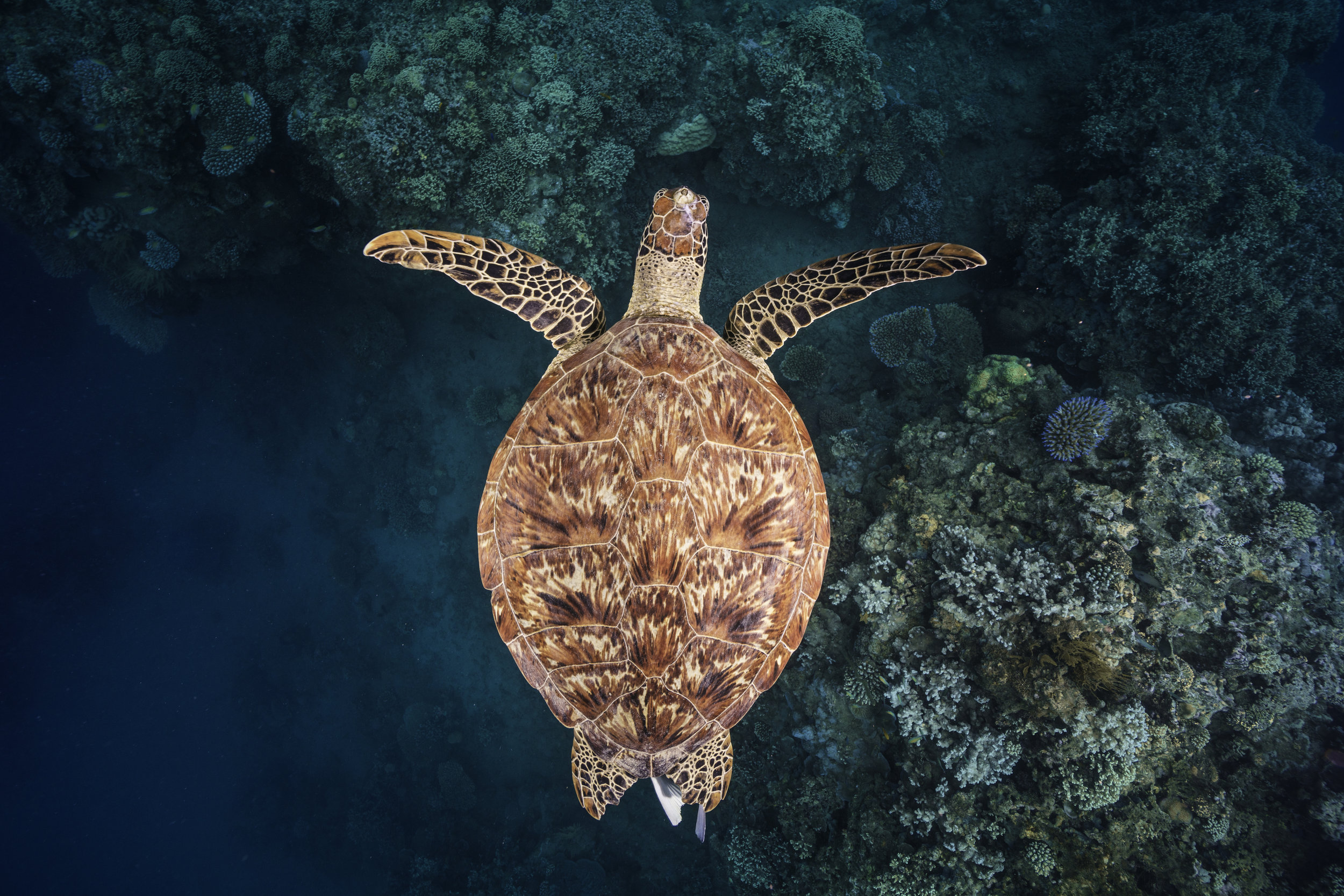
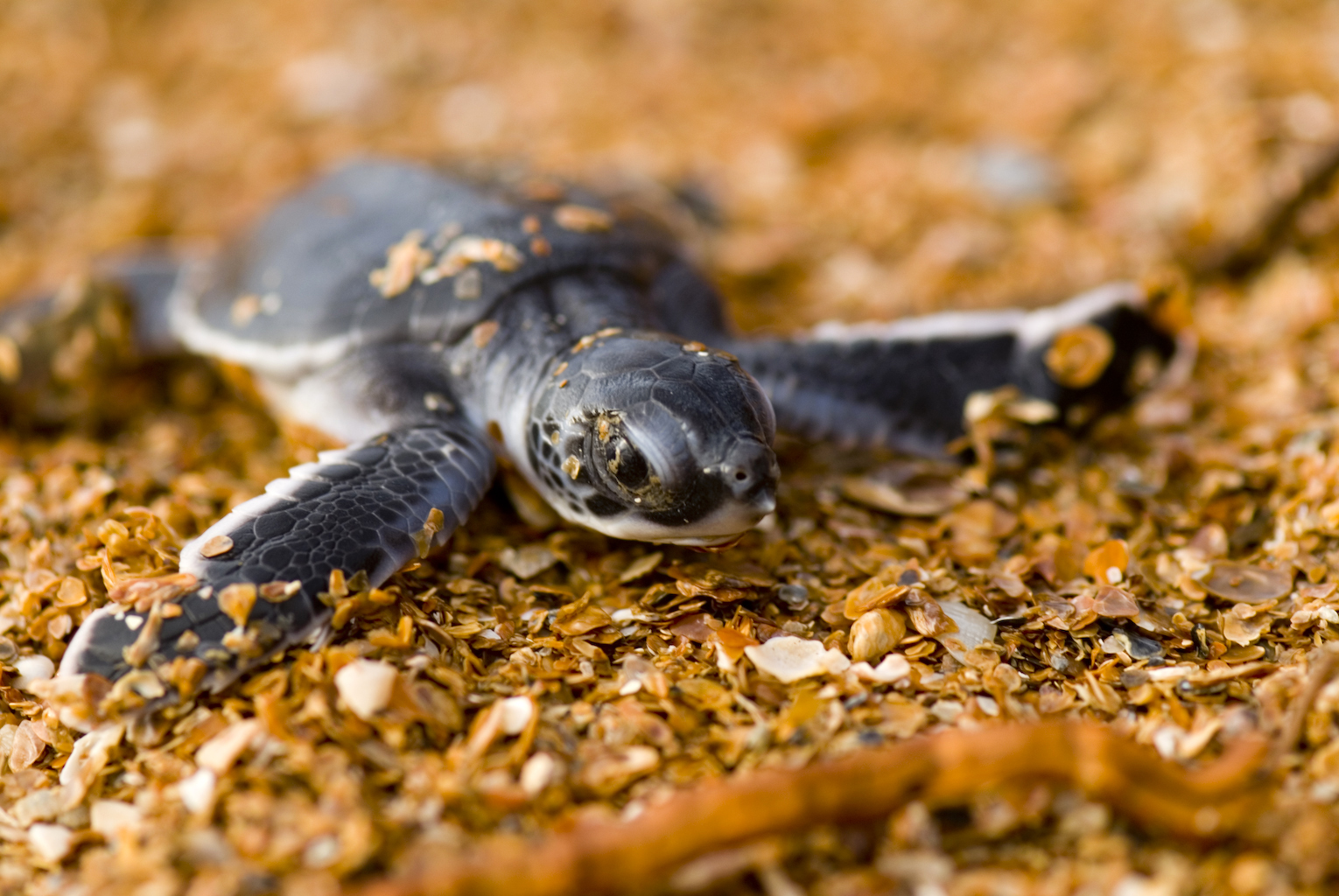
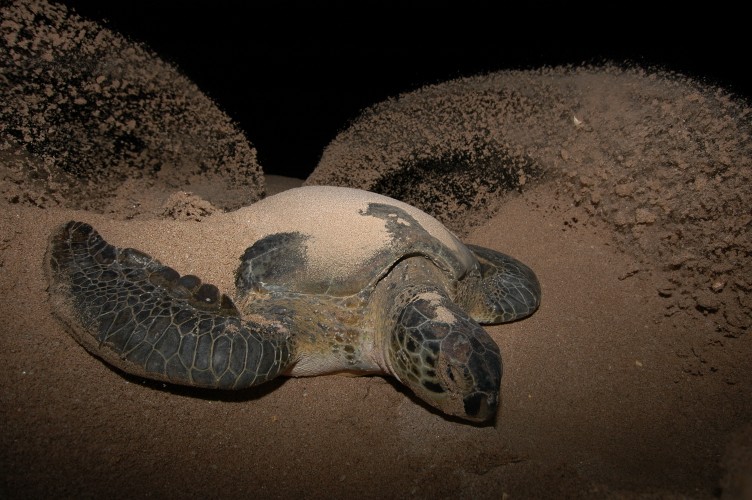
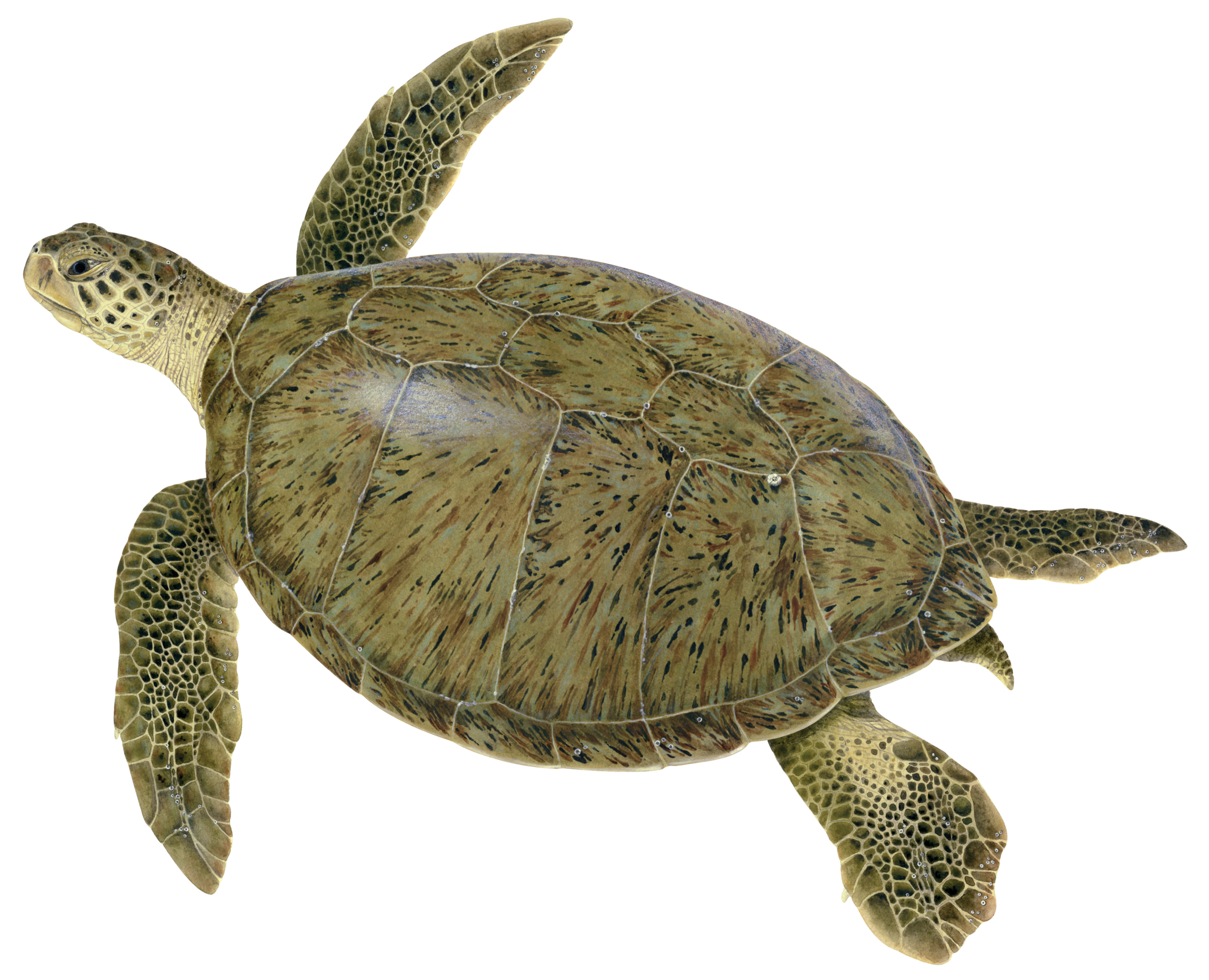
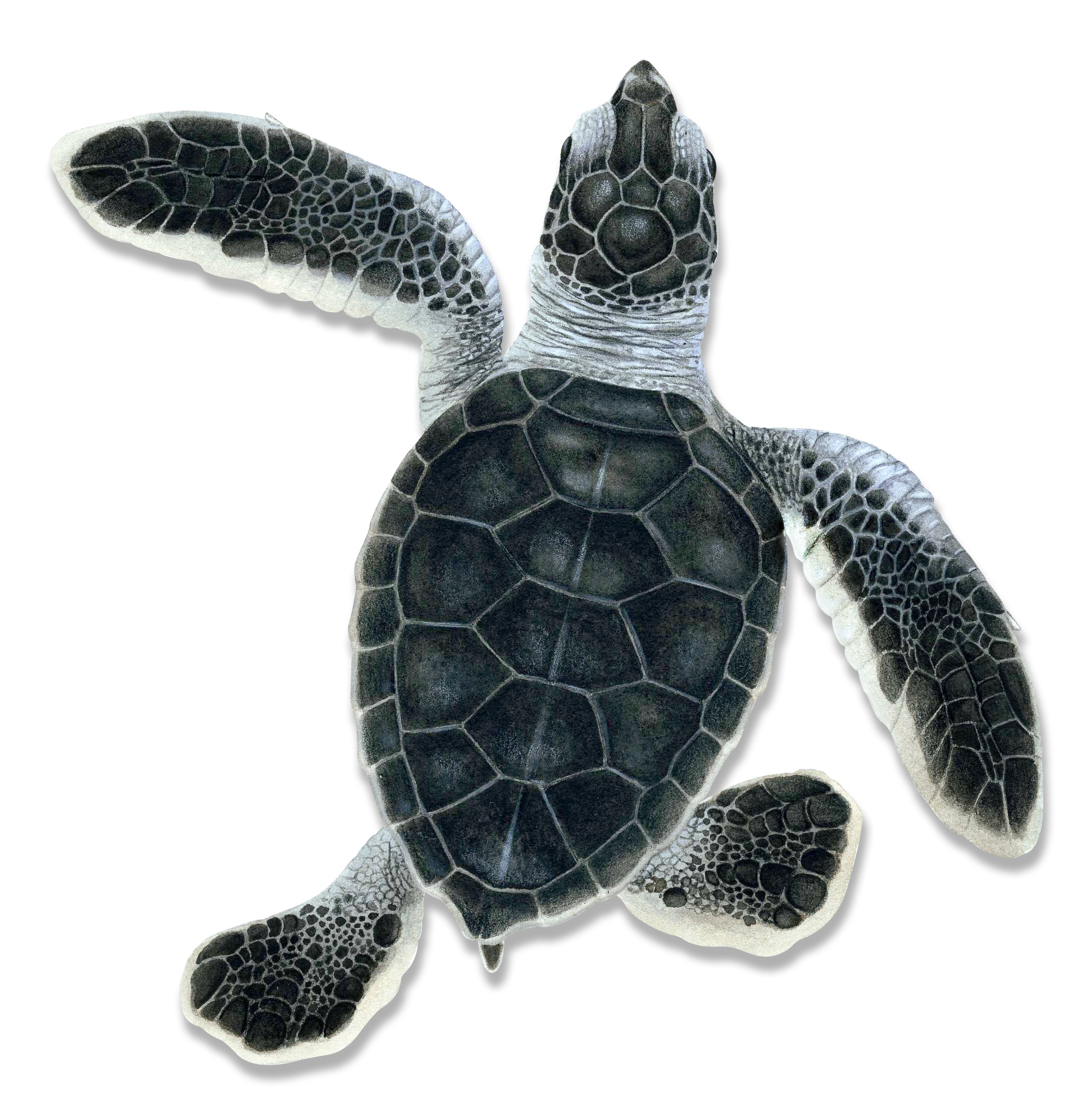
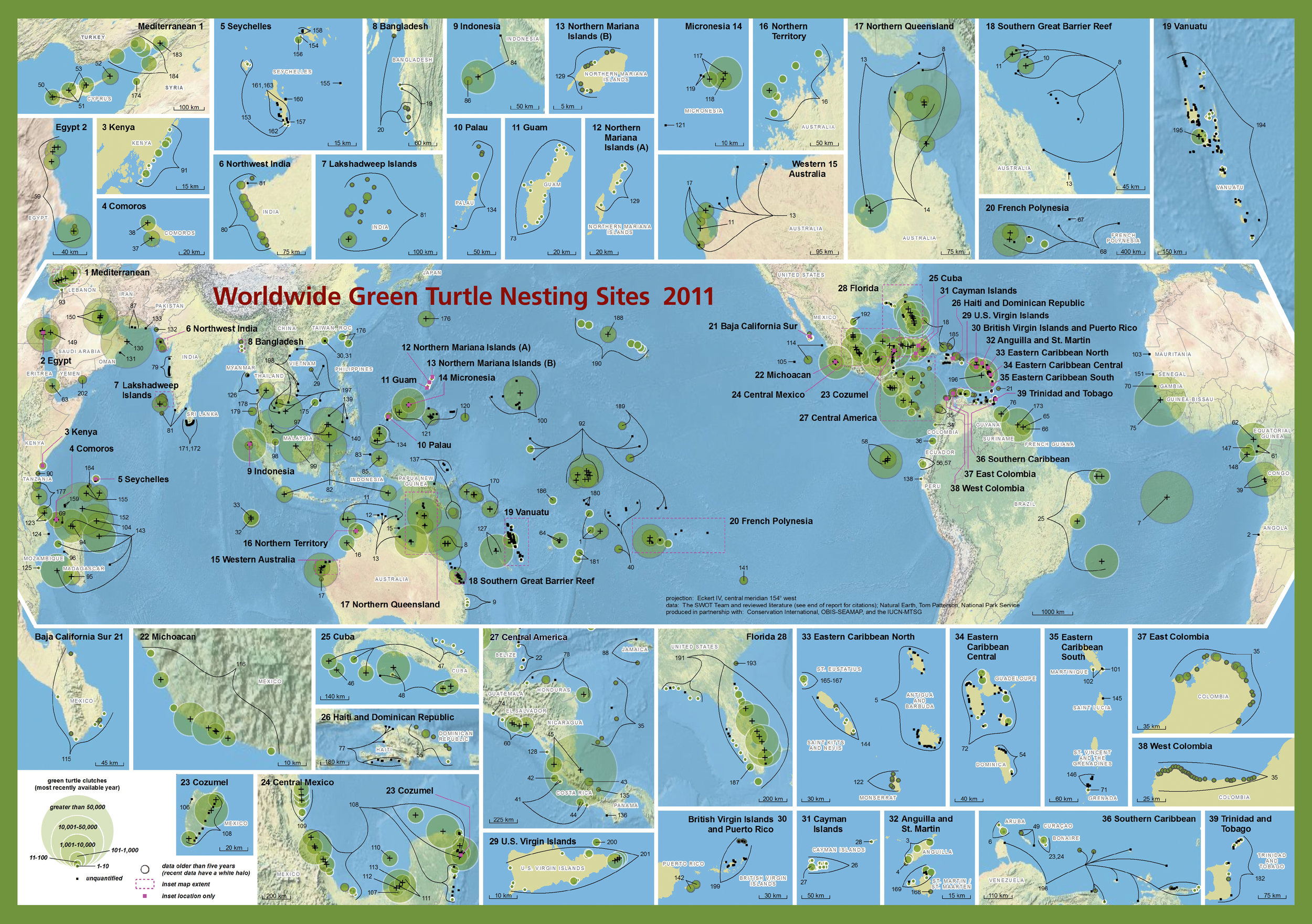
Green Turtle SCIENTIFIC NAME
Chelonia mydas
How Threatened are Green Sea Turtles?
Green turtles are listed as Least Concern by the IUCN Red List of Endangered Species following an updated status assessment published in 2025. Green turtles were previously Endangered since 1982, and their status improvement is due to dedicated global conservation efforts. Each of the subpopulations of green turtles has also been assessed by the IUCN and can be seen here.
Green turtle Facts
Green turtles were important for European explorers to the New World; they provided an essential source of food, and they helped crews navigate around islands at night by the sound of their aggregated breathing.
The former abundance of green turtles in the Caribbean is estimated to have been as high as 500 million individuals.
Eastern Pacific green turtles are termed ‘black turtles’ because of their darker coloration. They tend to be smaller and to lay fewer eggs than green turtles elsewhere.
Green turtles nest in highly diverse types of habitats, including archipelagoes, isolated coral atolls, mainland beaches, in all tropical and sub-tropical oceans
How big are green turtles?
Adult green turtles measure 80-120 cm in length and weigh up to 300 kg
Green turtle hatchlings are 30-40 mm long and weigh 25-30 g
What do green turtles eat?
Small juvenile green sea turtles eat soft-bodied invertebrates such as jellies and jelly-like organisms.
Older juvenile and adult green turtles are primarily herbivorous, but also eat sessile invertebrates, such as jellies, sea pens, and soft corals
How do Green Turtles Reproduce
Green sea turtles can take 20-40 years to reach sexual maturity.
Green turtles nest and reproduce every 2-4 years and lay between 2 and 5 clutches of eggs per season. Each of these clutches contains 80-120 eggs.
Green sea turtle eggs are the size of large ping-pong balls and weigh approximately 40-50 grams.
Green turtle eggs incubation for approximately 60 days.
What are the Threats to Green Sea Turtles?
Green turtles face numerous threats, most of them related to human activities. These threats include:
Fisheries Interactions - Bycatch, or the accidental capture, of green turtles in fishing nets and lines is one of the greatest threats to green turtles and all species of sea turtles. Discarded fishing gear, aka “ghost gear” also continues to entangle sea turtles indefinitely as it floats in the ocean.
Pollution and Pathogens (including plastic pollution) - plastic pollution affects green turtles by entangling them and impeding their movement and swimming ability. Sea turtles also eat plastic, mistaking it for food, which can cause choking, intestinal damage, and blockages.
Coastal Development - developed beaches restrict the area that green turtles have to lay their nests and lights from buildings discourage nesting turtles and disorient hatchlings.
Climate Change - changing climate impacts the green turtles’ food sources, their migration routes, and the development of baby turtles. Hotter, dryer sand negatively impacts the incubation of sea turtle nests and warmer nests produce more female hatchlings than males – an issue for population demographics.
Direct Take - In some places, green turtle eggs are harvested for consumption and adults are hunted for their meat.
Map of Green turtle Nesting
Worldwide Green Turtle Nesting Sites (SWOT Report, vol. VI, 2011)
Green Turtle Satellite Telemetry and Genetic Stocks (SWOT Report, vol. VI, 2011)
